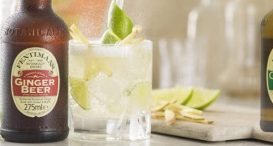5 Facts About Cognac
let’s begin
Cognac is a versatile and interesting type of brandy, with a rich history behind it, but not a lot of people know much about it.
It’s history stretches all the way back to the 16th century, when Dutch traders first began experimenting with ways to make wine last longer on the journey from France.
We’ve brought together some little known facts about Cognac that will mean that next time you’re at a bar you can wow all your friends with your knowledge!
1. There are only two forests where French oak for Cognac barrels can be sourced and only three varieties of grapes
If you thought Whisky limitations were restrictive, check out the laws on Cognac. Not only can Cognac only be made from three types of grapes, Folle Blanche, Ugni Blanc andColombard but also oak for the barrels can only be sourced from the Tronçais and Limousin forests. Tronçais is populated with Quersuspedunculata and Limousin with Quersussessiliflora, woods that are known for their toughness and ability to impart flavour due to being very porous.
2. Rancio
With Cognac, Rancio is EVERYTHING. And yes, that word does roughly translates to mean rancid in English. It refers to an earthy aroma, with a fruitiness to it that only the best Cognacs will have. Howeverm this is a very loose definition and even the best Cognac connoisseurs struggle to give the word a concrete definition.
3. Know Your Acronyms
Ever looked at a Cognac bottle and wondered what all the letters were for? well wonder no more! While there can be any number of categorisations depending on the company, the most common acronyms to find on a Cognac bottle are XO, VS, VSOP and Extra Old. VS means “Very Special” and that the Cognac has been aged for two years, whereas the VSOP means Very Superior Old Pale and that the Cognac has been aged for at least four years. XO and Extra Old mean the liquid has been aged for more than six years, although this will change in April 2017 so that XO means it has been aged for 10 years.
4. It doesn’t age like wine
Speaking of ageing, Cognac ages differently to wine. Rather than continuing to age and subsequently improve, Cognac will not age or improve after a certain period of time. That doesn’t mean it gets worse either though, as it will remain of the same quality as the day it was bottled.
5. There are six Cognac producing regions
Like Champagne or Kentucky Bourbon, Cognac can technically only be produced in a certain region of France. This region is of course Cognac, but Cognac itself is split into six smaller regions, dependant on terrior, or soil type. These regions are, Borderies, Grande Champagne, Petit Champagne, Fins Bois, Bons Bois, and Bois Ordinaires. The difference in soil types results in a difference in the grapes produced and the most respected regions are the Grand Champagne, Petit Champagne, and Borderies regions. Cognac will typically be made up of a blend from all six regions, to give it more depth and complexity of flavour.













2 thoughts on “5 Facts About Cognac”